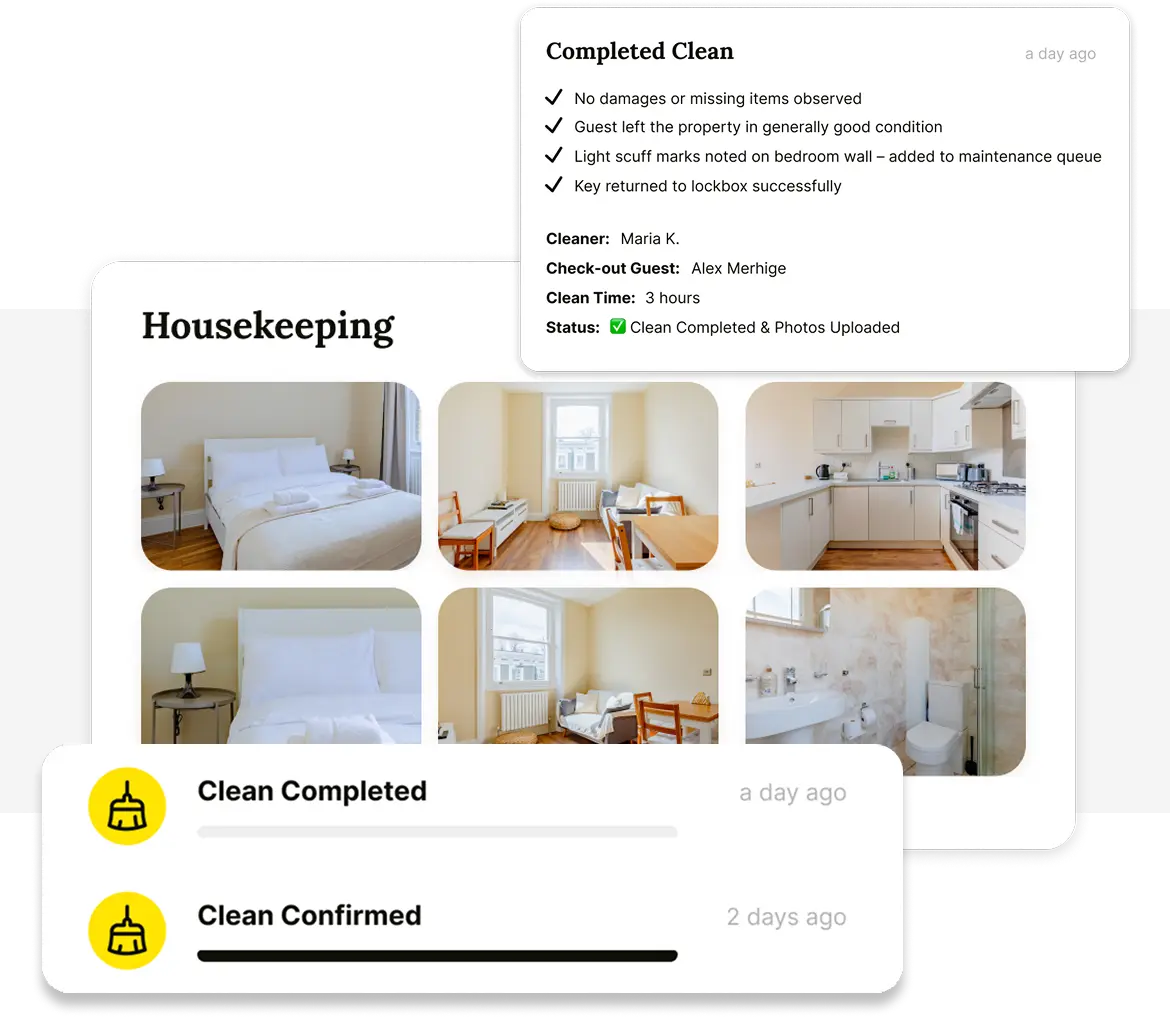Knowing when it's time to repaint your rental property becomes obvious when there are visible damages or when you're preparing it for the first tenant. But what comes next? How frequently should landlords prioritise repainting to ensure their properties remain in top-notch condition and inviting for tenants?
The world of painting straddles a fine line between practical necessity and aesthetic appeal. Eventually, landlords will have to repaint their properties to maintain them, yet there's an array of misconceptions about the ideal timing for this crucial task.
If you find yourself pondering questions like how often landlords should tackle repainting, whether they should undertake it themselves or employ a professional crew, and what type of paint works best, this guide is here to steer you in the right direction when it comes to painting rental properties. In this blog, we’ll discuss landlord painting responsibilities in detail.
Table of Contents
How Often Should Landlords Paint?
Determining the ideal frequency for repainting rental properties isn't always a straightforward process. It hinges on various factors that should be carefully considered before deciding.
Evaluating Paint Durability
Take into account the durability of the paint. Generally, interior paint jobs are expected to last between five and 10 years, contingent on paint type, job quality, location, and the wear-and-tear the walls endure.
Regardless of a property's meticulous upkeep, repainting will eventually become necessary. Over time, the paint wears out, colours fade, and walls lose their lustre.
A professional paint job should typically hold up for approximately 10 years, but minor scuffs, chips, and marks are expected to wear and tear. If the walls remain in good condition, postponing repainting is a viable option.
However, you might consider repainting if the rooms look outdated, the walls have accumulated significant scuffs, nicks, or damages beyond cleaning, or if you simply desire a fresh colour update. In cases where there are holes in the walls or ceiling, many landlords take the opportunity to repair the problem area and proceed with a full repainting. It makes sense to complete the entire wall or room if time and materials permit, as new paint applied only to one section can create a mismatch with the older paint, resulting in a visually displeasing outcome.
Timing Turnovers
While determining the ideal repainting schedule, factoring in turnover rates is essential. The frequency of repainting your rental units will significantly influence how often you experience tenant turnover.
If you find yourself welcoming new tenants yearly, you'll likely need to repaint every two or three years, if not sooner, owing to the wear and tear caused by regular moves. On the other hand, if you manage long-term tenancies, you can extend the repainting cycle, though there may be instances where a repaint is required earlier due to tenant requests or other considerations.
Incorporating a Painting Information Clause
When finalising your lease agreement, it's prudent to include a dedicated section outlining the guidelines concerning painting and the frequency of property repainting. This provision can also define what constitutes normal wear-and-tear, ensuring clear expectations for both parties.
Including this essential information fosters a transparent understanding between you and your tenant, minimising potential confusion and clarifying whether a painting is permitted.
In cases where the landlord approves for a tenant to paint the apartment, a separate lease agreement or addendum should be created. This document will include both parties' names, dates, and signatures.
The supplement must concisely describe the landlord granting permission for the tenant to paint specific rooms within the rental property. To avoid any ambiguity, it is advisable to agree upon designated colours and incorporate them into the agreement. A straightforward one-page sheet, provided to both parties after signing, is an effective and practical solution.
Painting Between Tenants: Legal Obligations and Considerations for Landlords
In most cases, landlords are not legally obligated to repaint their properties between tenants. If the incoming tenant is satisfied with the apartment's condition and signs the lease agreement, there is no requirement to repaint the walls before the new tenant moves in.
However, it's worth noting that some jurisdictions may have specific laws or regulations mandating landlords to repaint rentals between tenants. Yet, such requirements are relatively rare, and most landlords repaint for marketing and aesthetic reasons rather than legal obligations. As long as the interior paint meets habitability standards, such as being non-lead-based and not chipping or peeling, the paint doesn't need to be entirely new for a new tenant to occupy the property.
Worn or scuffed paint, while not considered a hazard, may influence the property's attractiveness to potential tenants. Some qualified applicants might prefer a freshly painted space for cosmetic and aesthetic reasons, making it potentially more challenging to attract the best tenants if the property is not repainted between tenancies.
Determining Painting Responsibilities: Landlord or Tenant?
In most cases, landlord painting responsibilities for the rental property falls on the landlord, as specified in most lease agreements. Tenants should seek written permission from the landlord before attempting to paint the rental. Generally, landlords prefer that tenants refrain from making any improvements, repairs, or painting without prior approval.
Responsible tenants who value your property will respect these guidelines and refrain from painting without proper permission. However, it is essential to clarify this matter explicitly to avoid any potential miscommunication. Including these details in the lease agreement is the most effective way to ensure both parties are on the same page regarding painting responsibilities.
🚀 Build a Thriving Airbnb Business with Houst
Monetize short-term rentals without owning property. Our Airbnb Business Partnership Program helps you start, scale, and automate a profitable Airbnb business with smart pricing, automation, and expert support.
💡 No Property Needed
📈 Expert Growth Strategies
🤖 Automated Hosting Tools

⭐ Rated 4.8/5 by 2,500+ Hosts

🧼 Airbnb Cleaning & Turnovers, Done Right

⭐ Rated 4.8/5 by 2,500+ Hosts

🛠️ Protect your property investment! Learn how landlord insurance covers property maintenance, including damages that may require repainting.
👉 Get the Guide: Rental Property Insurance 101 – What’s Covered and What’s Not
Tenant Obligations: Repainting Considerations When Moving Out
Whether a tenant has to paint the rental property before moving out depends on several factors that need to be considered:
Lease Conditions
If the lease agreement explicitly states that the tenant is responsible for repainting the walls upon moving out, they must fulfil this requirement. Otherwise, they may need to pay the landlord the cost of professional repainting.
Repainting to Neutral
In many cases, landlords do not permit tenants to paint the rooms unless they agree to repaint the walls to an approved neutral colour before vacating the property. If the tenant had previously painted the walls, they must restore them to the original colour.
Normal Wear-and-Tear
Tenants are not obligated to paint the walls, even if there are minor signs of wear. Normal wear-and-tear on the walls is expected during the tenancy, and it cannot be the tenant's responsibility to repaint for such regular use.
Houst: Effortless Rental Management for Short-Term and Long-Term Properties
Houst is a premier rental management company that offers seamless solutions for both short-term rentals and long-term lets property owners. From marketing and guest communication to Airbnb cleaning, maintenance, and optimising rental rates, Houst handles all aspects of property rental management professionally and efficiently.
Property owners can trust Houst to keep their rentals in excellent condition, addressing maintenance promptly and conducting regular inspections. With data-driven strategies, Houst optimises Airbnb revenue by adjusting rates to match market trends and demand patterns.
With Houst as a trusted partner, property owners can enjoy hassle-free rental management and maximise their rental revenue, whether it's holiday let management or traditional long-term rentals.
🚀 Build & Grow Your Airbnb Business with Houst
Turn your expertise into a profitable Airbnb business — without owning property.
Join Houst’s Airbnb Business Partnership Program to start, manage, and scale with ease. Get expert support, automation tools, and smart pricing strategies to maximize earnings and grow faster.

⭐ Rated 4.8/5 by 2,500+ Hosts


⭐ Rated 4.8/5 by 2,500+ Hosts

📜 Painting disputes with tenants? Check what your tenancy agreement says about maintenance responsibilities before taking action.
👉 Get the Guide: A Guide to Rental Tenancy Agreements for Residential Property
.webp)
🚀 Start & Scale Your Airbnb Business with Houst
Join Houst’s Airbnb Business Partnership Program to start, manage, and grow your short-term rental business. With expert marketing, automation tools, and dynamic pricing strategies, we help you maximise earnings and scale faster.
See How It Works
⭐ Rated 4.8/5 by 2,500+ Hosts

🏡 Are you responsible for painting your rental property? Understand your obligations as a landlord and when tenants may be liable for repainting.
👉 Get the Guide: Your Guide to Landlord Responsibilities in NSW
🔗 Must-Read Guides for Landlords
📢 Understanding Landlord Rights in Victoria – A breakdown of landlord obligations and tenant rights in property maintenance and repairs.
🔍 Health & Safety Regulations for Holiday Lets – Ensure your rental meets compliance standards, from painting upkeep to general safety measures.
🏡 Short-Term Rental and Airbnb Regulations in Brisbane – Know the legal requirements for maintaining and managing short-term rentals.
💰 How to Maximise Your Rental Property Value – Essential maintenance tips, including painting and refurbishments, to attract high-quality tenants.
🛠️ Essential Property Compliance Guide in the UK – Everything landlords need to know about meeting UK property maintenance laws.


.jpg)

